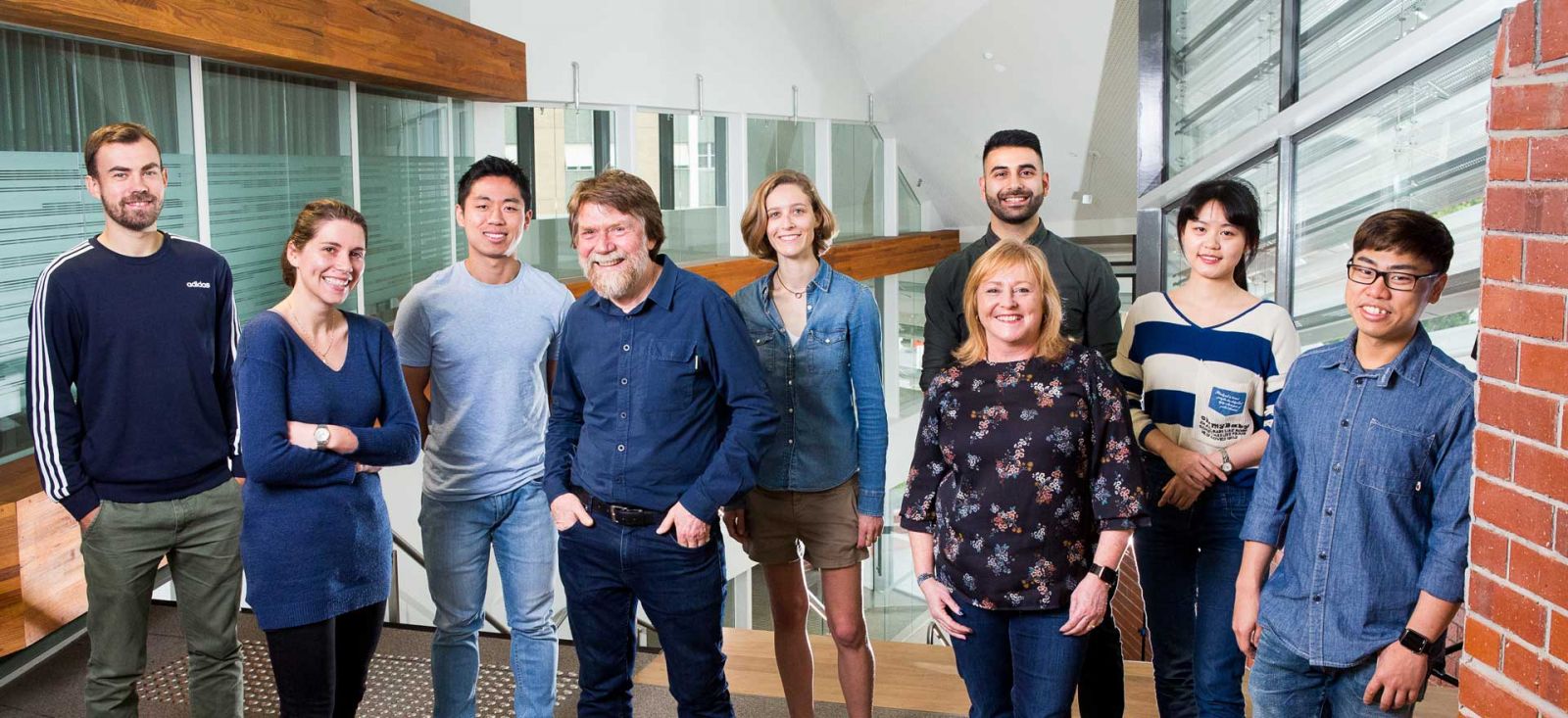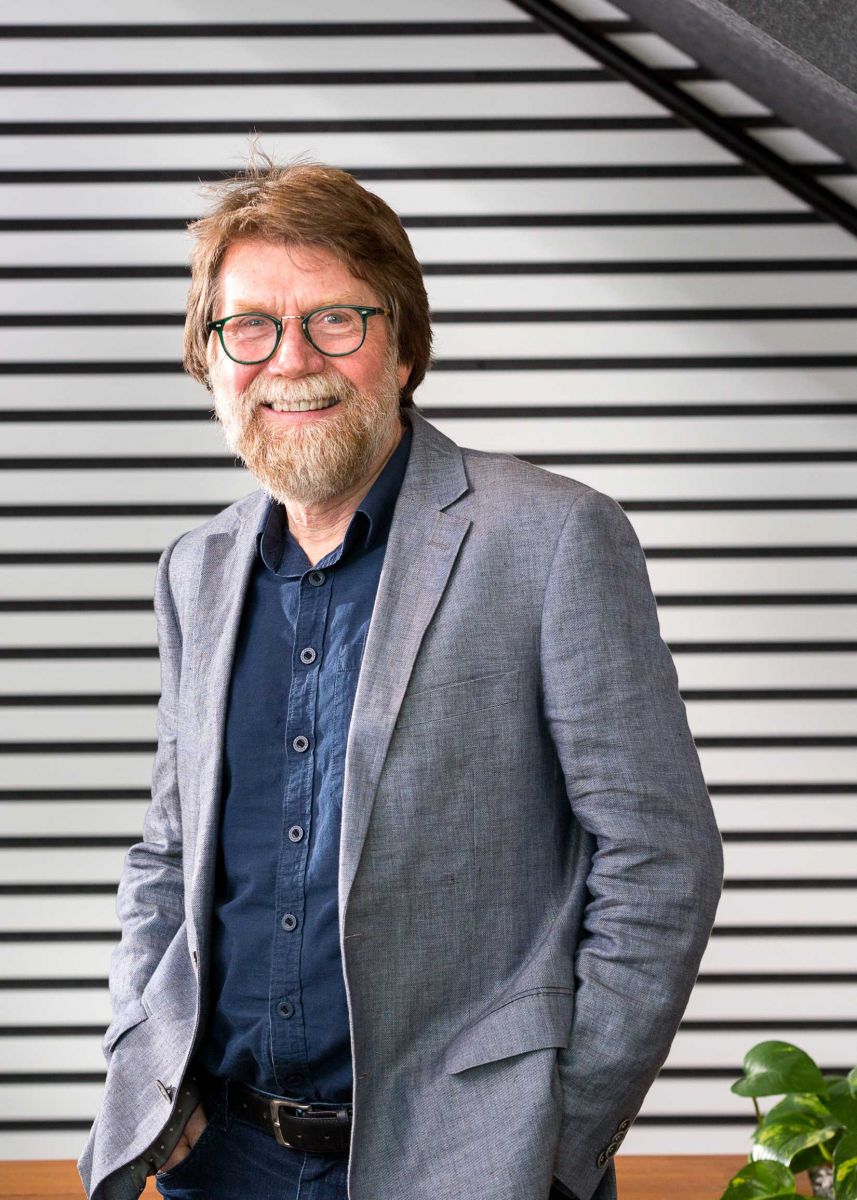Gleeson Group

“Our aim is to understand the molecular basis of membrane and protein sorting in the secretory and endocytic pathways in a variety of physiological processes using cultured cells and differentiated primary cells, and to exploit this knowledge for the design of new therapeutics.” Professor Paul Gleeson
Research
Our laboratory uses a range of state-of-the-art techniques in cell biology, molecular biology and molecular immunology to investigate:
Membrane trafficking
Membrane trafficking underpins many physiological processes, including secretion, receptor signalling, endocytosis, antigen presentation, and neural networking. Many diseases arise from defects in membrane trafficking, including Alzheimer’s disease.
Our laboratory has developed strategies for studying trafficking in primary cells and whole organisms. There are three main projects we are investigating:
-
Defining molecular machinery and cargo sorting along Golgi transport pathways
The trans-Golgi network (TGN) is a major traffic hub. We are defining the molecular machinery and sorting signals that regulate both the export and the import pathways to and from the TGN used by different cargos
-
Signals for endosomal sorting in development and disease
Recycling of many membrane proteins between the plasma membrane and endosome compartments, is essential for their function. Our research is investigating the perturbation of these pathways which result in neurodegenerative diseases such as Alzheimer’s disease.
-
Cell biology of membrane receptors regulating the serum half-life of therapeutic proteins
The neonatal Fc receptor (FcR) plays a critical role in regulating the half-live of a range of serum proteins, including IgG, in the adult. Our research, in collaboration with CSL, is investigating the membrane recycling pathway of the neonatal Fc receptor, information which is critical for the optimizing the life span of therapeutic proteins.
Molecular immunology and autoimmunity
Autoimmune diseases occur when the immune system turns against the body's own tissues, resulting in immune-mediated destruction. We aim to understand the development of autoimmune diseases and the basis for the loss of immunological tolerance to self-antigens. A major focus is to understand the role of suppressor T cells in protection from autoimmune disease, with the ultimate goal of discovering ways to treat autoimmune disorders.
Group Members
Group Leader
Paul Gleeson
Research Assistant
Fiona Houghton
Postdoctoral Scientist
Prajakta Gosavi
Wei Hong Toh
Lou Fourriere-Chea
PhD students
Xiao Peng Lin (PhD student)
Khalisah Liana Zulkefli
Anson Jing Zhi Tan
Andreas Pannek
Christian Makhoul
Alessa Webers
Honours Students
Jingqi Wang
Biography

Paul Gleeson is a Professor in the Department of Biochemistry and Molecular Biology at the University of Melbourne, located at Bio21 Institute. His research interests include the molecular mechanisms of intracellular membrane transport and the molecular basis of organ-specific autoimmune diseases.
Paul Gleeson obtained his PhD in 1980 from the University of Melbourne and did post-doctoral research in the biosynthesis and function of glycoproteins at the Hospital for Sick Children, Toronto, National Institute for Medical research, Mill Hill London and Department of Biochemistry, La Trobe University, Melbourne. He established an independent laboratory at Monash University in 1986 where he defined the targeting signals of Golgi glycosyltransferases, identified golgins of the trans-Golgi network and along with his colleagues developed one of the best defined mouse model of organ-specific autoimmune disease, namely autoimmune gastritis.
His current research applies a range of cell biological approaches to discover the molecular machines that regulate protein sorting in the secretory and endocytic pathways in a variety of physiological processes including primary cells and whole organisms. In 2001 he moved to Department of Biochemistry and Molecular Biology at the University of Melbourne and was Head of the Department from 2006, until 1 June 2016. He has a number of international research collaborations and has been a visiting scientist at the EMBL, Heidelberg, and the Institut Curie, Paris.

